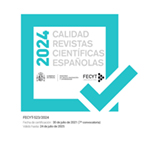La petrificación de los antiguos en Chumbivilcas (Cuzco, Perú). De la wanka prehispánica al actual ramadero
Abstract
The colonial trials of Cajatambo against the «idolatries» of Indians in Peru make reference to rocks called wanka, considered the copy of the ancestors. When he died, the civilizing hero separated into two elements: his body, afterwards mummified, and the fruit of its petrifaction, the wanka. This monolith promoted the crops cycle and symbolized the occupation of the space. In this article, I propose to draw, for the present time, the tracks of those rocks in the southern Andes of Peru. In peasant communities of Chumbivilcas (Cuzco), I found some stones called ramaderos, described as living beings. I will analyze the function of those Andean menhirs as they participate of the communal landscape’s configuration and its sacred spaces. Finally, I will study the evolution of the wanka and its use in the present time.Downloads
Article download
License
In order to support the global exchange of knowledge, the journal Revista Española de Antropología Americana is allowing unrestricted access to its content as from its publication in this electronic edition, and as such it is an open-access journal. The originals published in this journal are the property of the Complutense University of Madrid and any reproduction thereof in full or in part must cite the source. All content is distributed under a Creative Commons Attribution 4.0 use and distribution licence (CC BY 4.0). This circumstance must be expressly stated in these terms where necessary. You can view the summary and the complete legal text of the licence.









